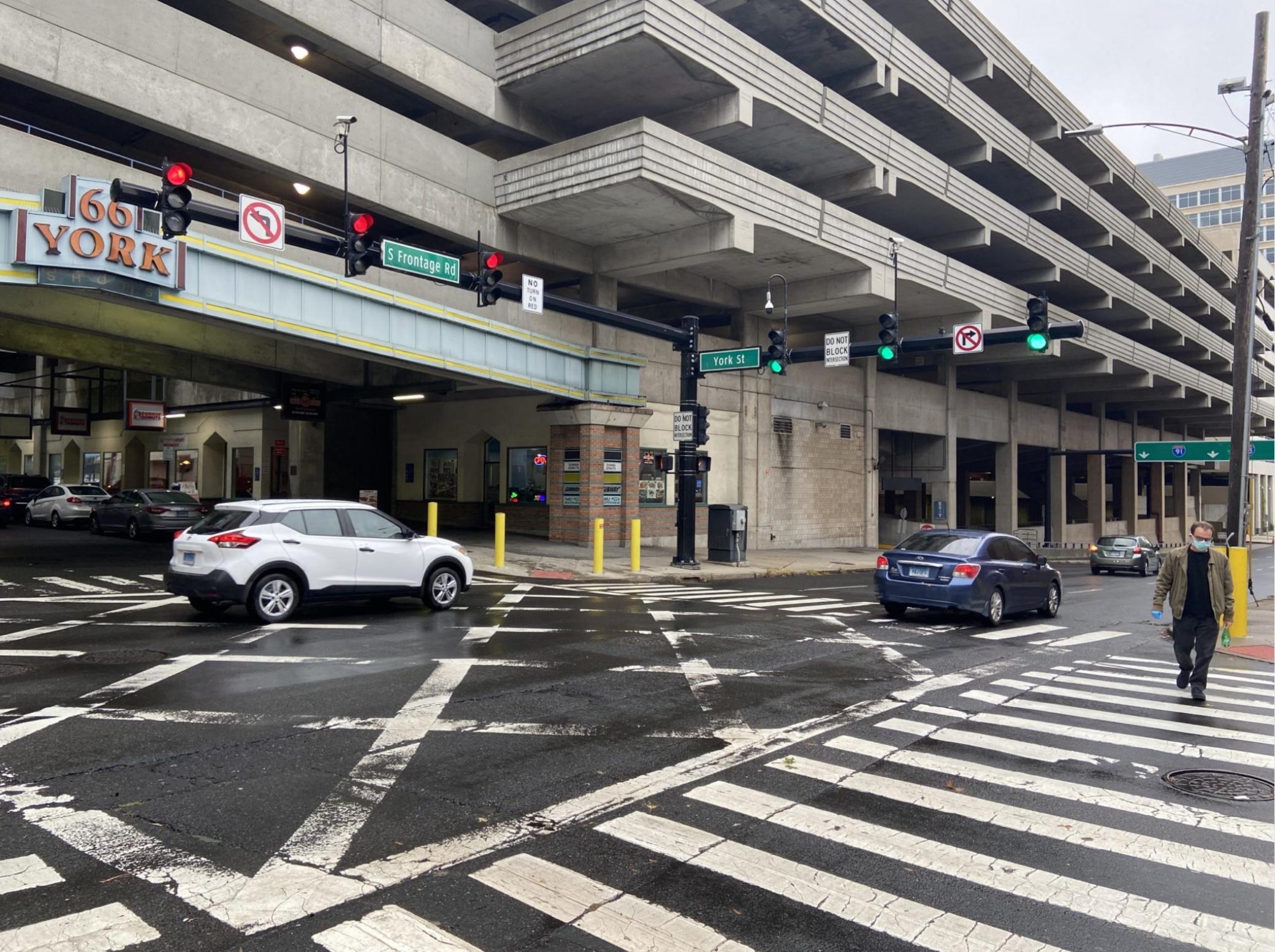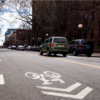‘Stitching the city back together’: Changes coming to downtown streets address York, South Frontage
Traffic patterns will be significantly impacted as a portion of South Frontage Road is closed for six months.

Isaac Yu, Contributing Photographer
The Elm City is moving one step closer to healing the urban “scar” of the Oak Street Connector.
In the meantime, a section of South Frontage Road, one of the city’s busiest arteries, will be closed to all traffic for five months beginning in June.
The closure is the third part of the city’s four-part Downtown Crossing Project, a decadelong project that seeks to reconnect the medical district and The Hill neighborhood to downtown New Haven with a series of boulevards that will cross over the Oak Street Connector. South Frontage, which runs parallel to the connector, will be raised by 8 feet in order to connect Congress Avenue from the south and Temple Street from the north with a bridge.
The section of South Frontage between College and Church streets will be closed for 20 weeks, significantly rerouting the flow of traffic in the surrounding area, which includes Yale New Haven Hospital and the Yale School of Medicine and School of Public Health.
Once constructed, the bridge will complete the reconnection of two streets that were formerly one, disrupted by the construction of the 1959 Oak Street Connector. Urban planners and officials agree that the project will reestablish a gridded street system through one of New Haven’s busiest districts, allowing the city to reclaim valuable developable land and boosting connectivity for pedestrians and bikers.
“Downtown Crossing is an infrastructure plan that will undo the damage that was done during urban renewal,” said Anna Mariotti, a representative of the infrastructure firm HNTB that led the project’s design, in an interview with the News. “We’re reconnecting a highway to nowhere.”
The Oak Street Connector, often described as a “highway to nowhere,” was designed to be part of Connecticut Route 34 as a limited access highway. Professor of urbanism Elihu Rubin ’99 noted in an interview with the News that many highways constructed during this period, including those running through New Haven, were often used by urban planners to clear areas of perceived blight. In many cases, dense neighborhoods inhabited by diverse communities were cleared away for roadways. In New Haven, 881 families and 350 businesses in the razed Oak Street neighborhood — largely inhabited by Black, Jewish, Italian and Irish communities — were forced to relocate. Rubin described this as a process of “internalized colonization.”
“We now know that the impacts of urban highway building were distributed in a deeply uneven fashion across the United States,” Rubin said. “This was a land grab of powerful interests under the auspices of the interest of the state and public interest.”
Ultimately, the limited access highway that the Oak Street Connector had been constructed for was never completed, leaving the multi-million dollar project without use. Now, for transportation and urbanism experts like Rubin, and New Haven Director of Transportation, Traffic and Parking Doug Hausladen ’04, the connector represents a “scar” in New Haven’s urban fabric.
The Congress and Temple bridge will be one of three reconstructed intersections along Route 34. Downtown Crossing’s first phase — which rebuilt College Street, reconnecting both the southern and northern parts — was completed in 2016. The second phase, which focuses on reconnecting Orange and South Orange streets with the state’s first-ever protected pedestrian intersection, is scheduled to be completed in June.
To accommodate the third phase’s 20-week closure of South Frontage, the city’s transit department will implement a series of changes on surrounding streets. Alternative routes for eastbound traffic, shown below, have been placed on Congress and Lafayette streets. To further ease traffic congestion in the area, signage will be posted as far as Ella T. Grasso Boulevard in the West River neighborhood to encourage drivers to use other routes.
A section of York Street will be transformed into a two-way road to accommodate for vehicles traveling to and from medical buildings in the area. Additionally, a new segment of Columbus Avenue will be opened near Union Station, fitted with new protected two-way bike lanes, Hausladen announced at the Downtown Wooster Square Community Management Team meeting on Tuesday.

“By working collaboratively with the community, alders, departments, Yalies and townies, we will be able to keep advancing these bike-ped-friendly concepts,” Hausladen told the News. “We’re undoing the last generation’s sins of traffic work.”
The traffic rerouting along York has received particular attention in recent months, particularly at the intersection of York and South Frontage, where three Yale affiliates have been killed in motor collisions over the last decade. Requests for a bike lane at the intersection made by Ward 3 Alder Ron Hurt and Ward 7 Alder Abby Roth ’90 LAW ’94 will not be possible until York returns to a one-way road, the New Haven Traffic Authority announced this month.
“One positive from the construction shift is that two-way traffic tends to be slower than one-way traffic and so that will be an improvement for cyclists,” Roth wrote in an email to the News. “I hope there will be less [traffic] volume overall, with vehicles trying to avoid the construction.”
Hausladen told the News that this six-month period does give the city a unique opportunity to study the area’s traffic volume and determine the safest options moving forward. These could, among other possibilities, include a long-term plan to make York Street a permanent two-way road.
Besides promoting connectivity, Downtown Crossing’s four phases will allow for the reclamation of approximately 10 acres of developable land above the Oak Street Connector. The Alexion building has already been completed at 100 College St., while another tower, with 10 stories of office space and bioscience labs, is slated to begin construction at 101 College in June.
Phase 4 of the Downtown Crossing is scheduled for construction between 2023 and 2025.
Interested in getting more news about New Haven? Join our newsletter!









